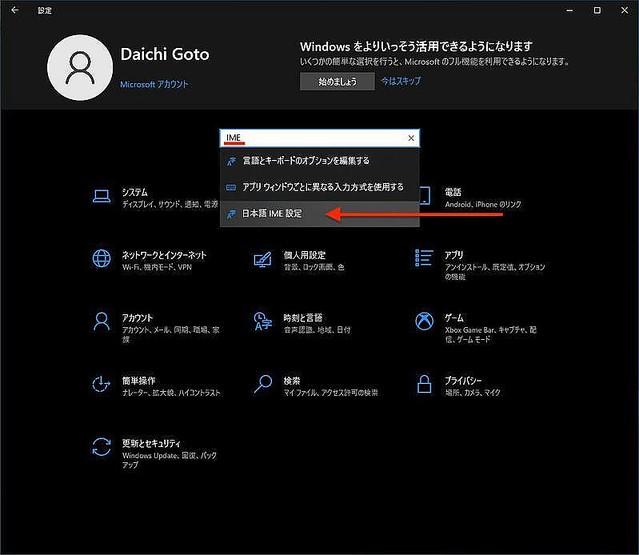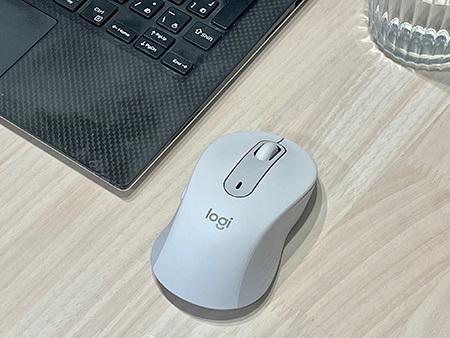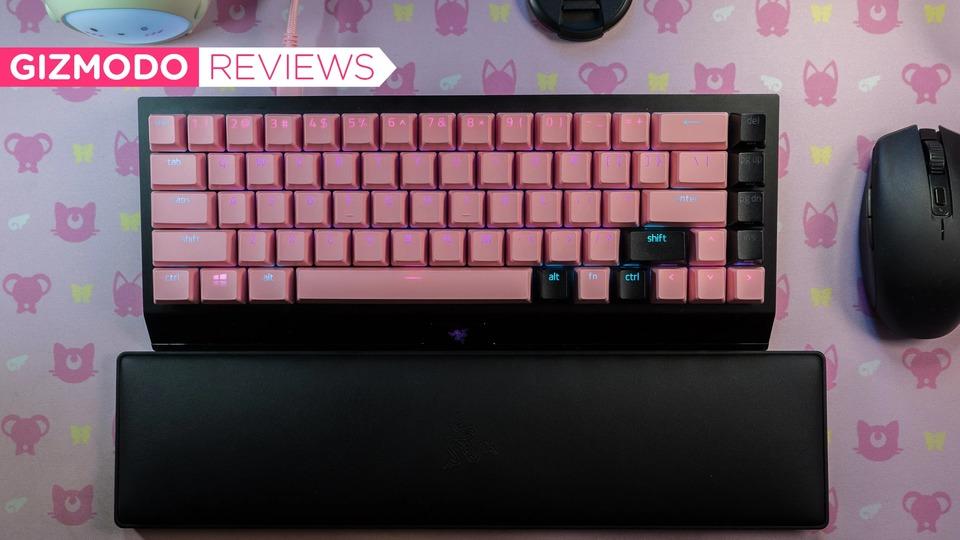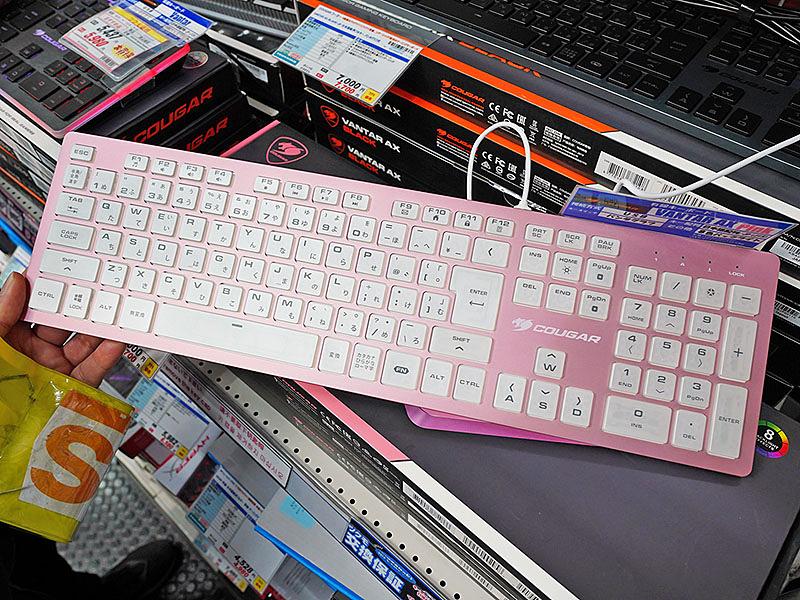What are the essential settings for using an English keyboard in a Japanese environment?
The majority of keyboards in circulation in Japan are Japanese keyboards. Although it is a convenient keyboard for entering Japanese, it is also a layout that leaves dissatisfaction with the use of shortcut keys. Considering the usability of shortcut keys, the English keyboard is more convenient. However, when using an English keyboard in a Japanese environment, there are settings that must be done first. Therefore, in this article, I will introduce the essential settings when using an English keyboard in a Japanese environment.
Choosing an English keyboard
Most keyboards available in Japan are of the type known as Japanese keyboards. It is intended for Japanese input, and most PCs use a Japanese keyboard. However, the Japanese keyboard has no regularity in the arrangement of symbols, and is difficult to handle in inputting symbols.
In addition, the key to significantly improving the efficiency of keyboard operations is the use of shortcut keys, but Japanese keyboards are incompatible with these shortcut keys.
First of all, many applications are often developed mainly for regions where English keyboards are used, and shortcut keys are inevitably set assuming an English keyboard. Japanese keyboards are in a disadvantageous position from the beginning.
The layout (placement of keys) is slightly different between the English keyboard and the Japanese keyboard. Signs are especially different. Shortcut keys with symbols are intuitive and easy to use on English keyboards, but they often end up in mysterious places on Japanese keyboards. You may wonder why such hard-to-remember keyboard shortcuts are used.
In other words, from the aspect of using shortcut keys, using an English keyboard instead of a Japanese keyboard is a logical choice.
Major premise: Change layout to English keyboard
If you have been using a Japanese keyboard and want to change to an English keyboard, first install the applicable device driver and change the keyboard layout to Japanese. Let's do the work to change from the keyboard to the English keyboard. In the setting application, set "Time and language" → "Language" → "Japanese" → "Option" → "Layout change" → "English keyboard (101/102 key)".
The first thing you should do is set the key to switch Japanese input
The biggest advantage of the Japanese keyboard is that there is a key for Japanese input. You can switch Japanese input (IME-on/off) with the "half-width / full-width" key.
In addition to "half-width/full-width", the Japanese keyboard has keys such as "no conversion", "conversion", and "hiragana/katakana". A unique conversion is assigned to each, but there are also customizations such as assigning "no conversion" to "IME-on" and "conversion" to "IME-off". By assigning IME-on and IME-off to separate keys, you don't have to worry about which input mode you're using. You don't need to know the state because you just need to press the key of the mode you want to enter when you enter.
Although it is an advanced usage, "half-width/full-width", "no conversion", "conversion", and "hiragana/katakana" may be assigned to completely different shortcut keys. Since the Japanese keyboard has more keys than the English keyboard, these keys can also be used as special keys in this way.
Conversely, English keyboards do not have such keys. In other words, if you do not set Japanese input switching (IME-on/off), you cannot switch Japanese input from the keyboard. This is inconvenient and unavoidable. When using an English keyboard, first set the "IME-on/off" shortcut key.
Usually, "Ctrl" + "Space" is often assigned to switch Japanese input (IME-on/off). Other operating systems use Ctrl+Space for similar purposes, so let's try enabling it with this setting first.
How to set IME-on/off with "Ctrl" + "Space"
Start the setting application, search for "IME", and select "Set Japanese IME" to select.

Select "Customize Keys and Touches".
I think that "Assign desired function to each key" is "OFF", so change this to "ON".
Make sure "Ctrl+Space" is set to "IME-on/off".
Now you can switch Japanese input with "Ctrl" + "Space".
How to set "Ctrl" + "Space" to turn IME on/off (for older Microsoft IMEs)
"Windows 10 version 2004" ("Windows 10, version 20H1 ” or “Windows 10 May 2020 Update”), you are using an older version of Microsoft IME. If you're using this older version, the configuration is different.
Start the setting application, search for "IME", and select "Japanese IME settings".
Select General.
Click "Open Advanced Settings" in Advanced Settings.
"Detailed setting of Microsoft IME" will start up, so select "Change" in "Editing operation" here.
Since "IME/on/off" is assigned to the "half-width/full-width" key, click "half-width/full-width" and change the key to "Ctrl" + "Space".
Since "Ctrl" + "Space" is already assigned to another key, the above error is displayed, but press "OK" as it is and turn on IME by "Ctrl" + "Space" / Enable off.
How to switch between "New Microsoft IME" and "Old Microsoft IME"
You can use "Old Microsoft IME" even on Windows 10 version 2004 or later versions. Later versions can switch between the new Microsoft IME and the old Microsoft IME. Here's how to switch:
Start the setting application, search for "IME", and select "Japanese IME settings".
Select General.
Change "Use previous version of Microsoft IME" from "Off" to "On". Now the old Microsoft IME will be used.
Conversely, by changing this part from "on" to "off", the new Microsoft IME will be used.
Considering that the new Microsoft IME will continue to be developed, basically it is better to use the new Microsoft IME. However, at the moment, there are still cases where it can only be set with an old Microsoft IME, so in such cases, the old Microsoft IME will be used.
"Ctrl" + "Space" collision problem and how to avoid it
"Ctrl" + "Space" is set to switch Japanese input (IME-on/off) on an English keyboard. However, this shortcut key has a problem of "collision". Some applications already treat Ctrl+Space as a different shortcut key. If Windows 10 uses "Ctrl" + "Space" to switch Japanese input (IME-on/off), it cannot be used as a shortcut key on the application side.
There are two main ways to avoid this. It's a matter of which one to prioritize.
In this case it's easy. Give up "Ctrl" + "Space" as a shortcut key on the application side, or assign it to another key.
In this case, more choices are needed. Two things:
If you use "Shift" + "Space" to switch Japanese input (IME-on/off), you can set it with the new Microsoft IME or the old Microsoft IME. If "Shift" + "Space" is also used in another application and "Shift" + "Space" cannot be used to switch Japanese input, it is not possible to use the new Microsoft IME at this time. In that case, you need to switch to the old Microsoft IME and set another shortcut key in that setting to use it.
If you use an English keyboard, consider changing "CapsLock" to "Ctrl"
As mentioned above, when using an English keyboard on Windows, instead of the disappearing "half-width / full-width" key Let's set a shortcut key. You can switch inputs by selecting from the taskbar with your mouse, but this is inefficient and impractical.
In addition, if you want to master shortcut keys using an English keyboard, I would like to change the setting to change "CapsLock" to "Ctrl" key. For that setting, I would like you to refer to "How to switch "CapsLock" and "Ctrl" in Windows 10 [PowerToys edition]".







